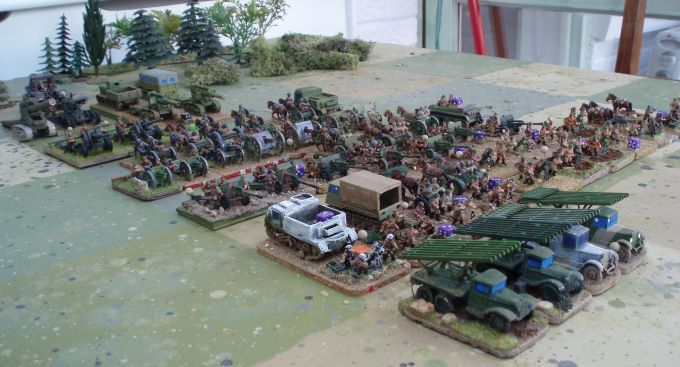
A miniature wargaming website in the UK came to my attention because he quoted from my Kursk book (actually probably from my blog). The link is here:
https://notquitemechanised.wordpress.com/
Now, this was one of the many asides that I developed during the writing of the book and I felt one of the more significant discussions in the book. I am always concerned that a number of major points in that book were drowned in the 1,662 pages. I am glad he was able to identify and pull that one out.
The quote is in his blog post, but for the battle we estimated that the Germans fired 51,083 tons of ammunition while the Soviets fired 21,867 tons. I don’t think anyone else have made such a calculation.
For the Soviet rocket launchers (Katyushas) they fired an estimated 2,422 tons of ammo, while for the German rocket launchers (Nebelwerfers) they fired 5,916 tons of ammo.
This is subject that probably could be the basis of a complete stand-alone study or book. I suspect if this was the case at Kursk, where the Soviet army had three months to prepare and stockpile, then it is very much an issue for other, especially more mobile, operations.
P.S. The complete quote is also in this earlier blog post:

Chris, did you reverse the numbers for soviet and German?
No. Why?
I was looking at the link that was at the link you posted: https://www.allworldwars.com/Tactics-and-Fire-Control-of-Russian-Artillery-in-1941-44-by-Richert.html
The Soviet artillery seems to have been reasonably well led. But you can see a few instances where they just stop firing.
Is their low fire rate because of their occasional inability to shift targets within a fluid situation? Or did their doctrine/manufacturing decisions not provide them with enough ammunition to keep up a continuous fire?
Similar to the way that the Soviets (the Germans doing this late in the war) downgraded quality concerns in their armor plate for armored vehicles, the Soviets may have decided to prioritize tank production over artillery shells.
This site ( https://www.flamesofwar.com/hobby.aspx?art_id=1001 ) states something along those lines:
“Direct fire was less wasteful of ammunition than indirect shelling which was considered an inefficient way of destroying the enemy. The Soviet Union experienced severe ammunition shortages for its artillery early in the war. This was because the ammunition factories were mostly positioned further west than the gun factories. In 1941 the invading German army quickly overran the ammunition production facilities, while many of the artillery factories were evacuated to safety. As a consequence, there was a massive imbalance between the number of guns produced and the amount of ammunition produced. By the end of 1942 the Soviets had increased gun production three times faster than they increased ammunition production. Ammunition shortages encouraged the use of direct fire.”
Thanks. That last quote is useful. Again, this is something that really needs to be studied in more depth. It clearly could have been a major driver in the differences in combat power and casualty exchange rates between the forces.
One also need to look at the “doctrine” of artillery use the preference for direct fire over indirect fire.
As I said, this is really the subject of an independent study or book.
1.) There is no evidence of a tendency towards a “downgrade”, per criteria (see Sollkurve for late war plates), if anything that might be a question of skilled to unskilled labour, but fluctuations are always to be expected. In the Soviet case more labour was drawn to the fronts and substituted by women and teenagers, this would explain for instance the step backwards to a simpler projectile design (BR 350 A/B).
2.As for the loss of assets via the decline of territory: The Soviets possessed backup facilities established (and also partially used) prior to Barbarossa (see Samuelson), while their preparations as an invasion force commenced during a time when Germany was still sitting under the confines of the treaties. There was no system that was better prepared from a tactical and strategic point of view, their biggest mistake was to underestimate the quality and volatility of their future opponents, pre war military expenditures support this notion.
This of course does not refer to quality of munitions, though design and sophistication seemed also in Axis favour, widening the casuality infliction potential only further. The picture remained almost unchanged during the later phases of the war (despite the steady increase of the aid and territorial gain), WW1 and the Winter War are also additional examples.
They had to supply a very large Army, putting a strain on the economy that was barely capable of doing so (smaller cake, larger Army), per capita GDPs correlate well with the investment per soldier.
They had to produce so many artillery pieces, as they also lost many artillery pieces, as production remains a function of irrecoverable losses.
Have you read about Totenkopf & Wiking’s battles around Warsaw? During the third battle, the German ammunition expenditure is simply astonishing.